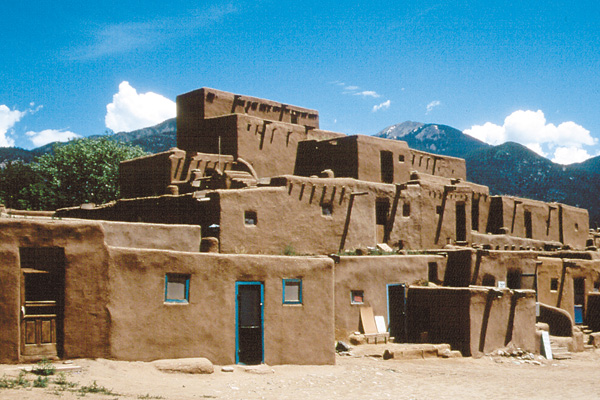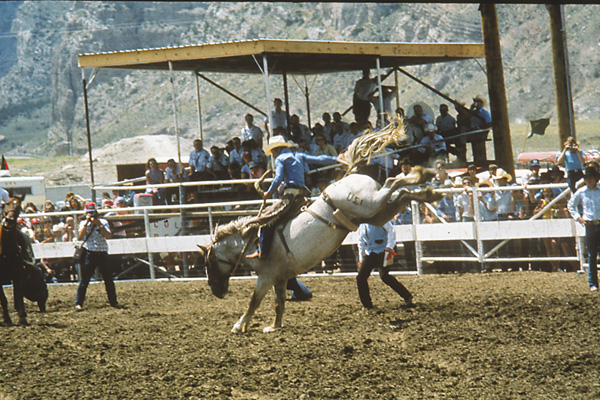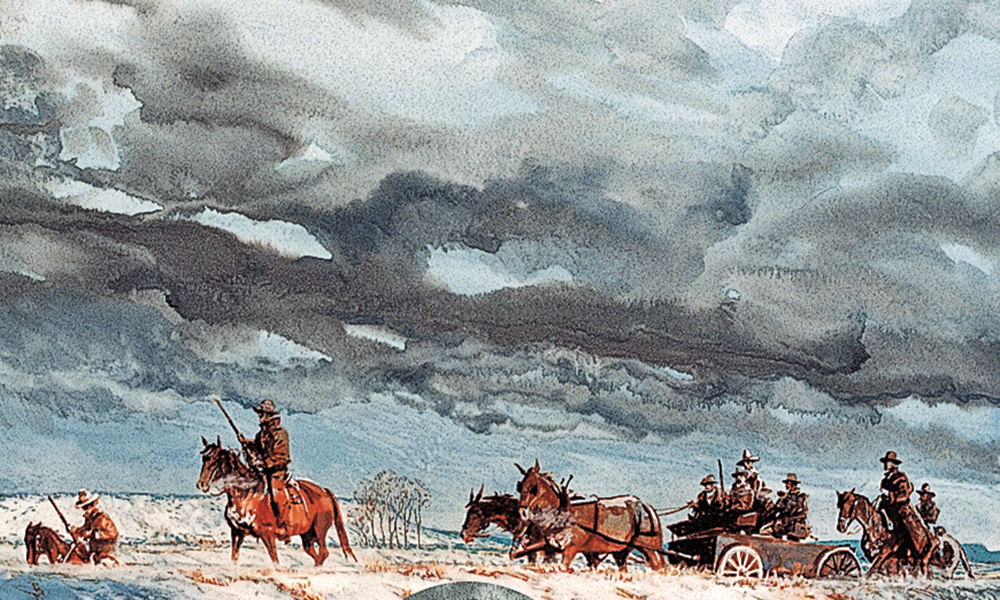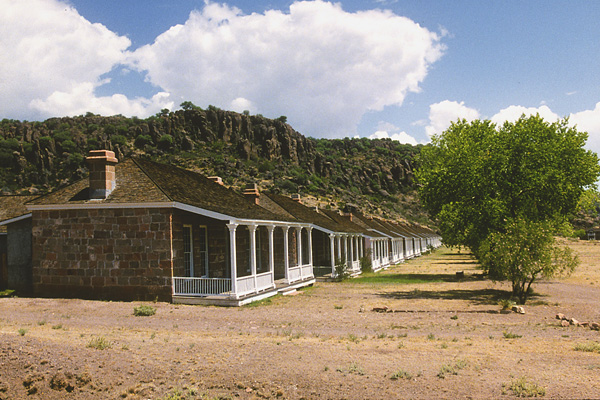 Taos is about as close as you can come to visiting a foreign country in the United States. Nestled at the base of the Sangre de Cristo Mountains in Northern New Mexico—72 miles north of Santa Fe—Taos creates a first impression that the Spanish, Anglo and Native American cultures still impact its life.
Taos is about as close as you can come to visiting a foreign country in the United States. Nestled at the base of the Sangre de Cristo Mountains in Northern New Mexico—72 miles north of Santa Fe—Taos creates a first impression that the Spanish, Anglo and Native American cultures still impact its life.
It is also a town of pickup trucks and chile ristras, adobe churches and beautiful vistas. Yet it is rife with history that will hark you back to an ancient and time-honored civilization.
Taos is best visited by car since air travel is restricted to small planes, and the railroad quit running decades ago.
To get your bearings, go on one of Peter Mackaness’ famed historic walking tours, which begin at the Hotel La Fonda De Taos on the Town Plaza.
The Taos Pueblo is the best place to feel the pervasive sense of history. The multi-story adobe pueblo, with its labyrinth of rooms, has been home to Native Americans for almost 1,000 years.
About 150 Tiwa Indians live and work here, creating native foods, jewelry and woven goods. The pueblo is the oldest in the Southwest and is listed as a National Historic Site. Open most days, it closes for sacred ceremonies, so call (505) 758-1028 for visiting hours.
Stop at Town Hall in the Taos Plaza for a look at the Taos Timeline Murals that present a visual history of Taos from 1300 to 1848.
Kit Carson, whose home is now a popular tourist attraction, is one of several mountain men who lived here.
Other colorful residents include Mabel Dodge Luhan, who arrived in 1917, promptly ditched her third husband and married a Taos Indian, Tony Luhan. Together, they entertained writers, artists and visionaries that often included Georgia O’Keeffe, Ansel Adams, Willa Cather, Thornton Wilder, D.H. Lawrence and Thomas Wolfe. Their home is now a charming bed and breakfast.
Thirty years later, Standard Oil heiress Millicent Rogers moved to Taos and began collecting Southwest art, creating the “Santa Fe Style.” Today, her collections are housed in the Millicent Rogers Museum.
In the 1950s, Ernie Blake built the Taos Ski Valley, one of the country’s most popular winter ski resorts. Hippies found Taos a popular haven in the 1960s and ’70s, and many stayed to become artists, musicians, business owners and entrepreneurs. Dennis Hopper used Taos as a backdrop for his 1969 movie, Easy Rider, and then moved here a year later.
The artist R.C. Gorman migrated to Taos in the mid-1960s and his Navajo Gallery is well worth visiting.
Taos is now considered one of the great art centers in the U.S. and is home to numerous galleries, most displaying Southwestern landscapes and traditional Native American art.
A visit to Taos wouldn’t be complete without stopping by the historic San Francisco de Asis Mission in Ranchos de Taos. This is the most photographed and painted church in the country and is located near a small plaza south of town.
Wind up your day at the Adobe Bar in the historic Taos Inn. Called “the living room of Taos,” this is the place to relax, have a drink, prop your feet up by the fireplace, look for celebs and reflect on a day well spent in a small town steeped in Southwestern history.
M.J. VanDeventer is the editor of Persimmon Hill magazine.






